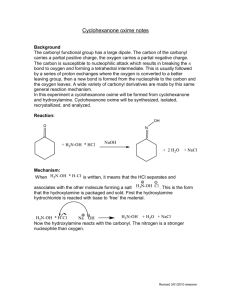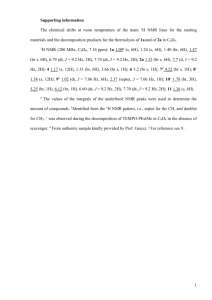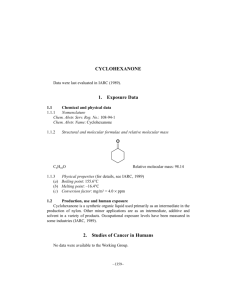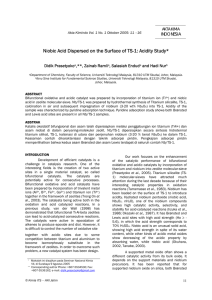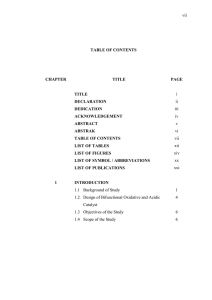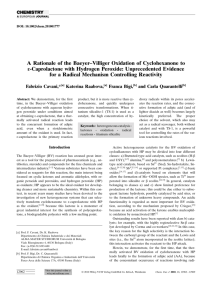Microsoft Word
advertisement
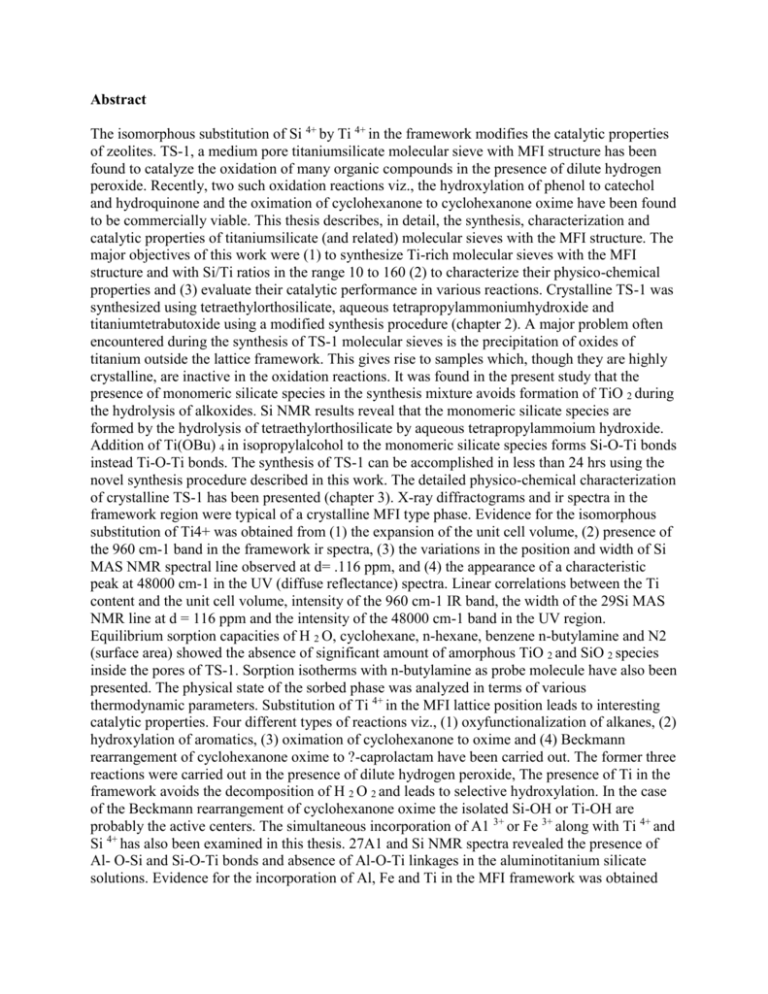
Abstract The isomorphous substitution of Si 4+ by Ti 4+ in the framework modifies the catalytic properties of zeolites. TS-1, a medium pore titaniumsilicate molecular sieve with MFI structure has been found to catalyze the oxidation of many organic compounds in the presence of dilute hydrogen peroxide. Recently, two such oxidation reactions viz., the hydroxylation of phenol to catechol and hydroquinone and the oximation of cyclohexanone to cyclohexanone oxime have been found to be commercially viable. This thesis describes, in detail, the synthesis, characterization and catalytic properties of titaniumsilicate (and related) molecular sieves with the MFI structure. The major objectives of this work were (1) to synthesize Ti-rich molecular sieves with the MFI structure and with Si/Ti ratios in the range 10 to 160 (2) to characterize their physico-chemical properties and (3) evaluate their catalytic performance in various reactions. Crystalline TS-1 was synthesized using tetraethylorthosilicate, aqueous tetrapropylammoniumhydroxide and titaniumtetrabutoxide using a modified synthesis procedure (chapter 2). A major problem often encountered during the synthesis of TS-1 molecular sieves is the precipitation of oxides of titanium outside the lattice framework. This gives rise to samples which, though they are highly crystalline, are inactive in the oxidation reactions. It was found in the present study that the presence of monomeric silicate species in the synthesis mixture avoids formation of TiO 2 during the hydrolysis of alkoxides. Si NMR results reveal that the monomeric silicate species are formed by the hydrolysis of tetraethylorthosilicate by aqueous tetrapropylammoium hydroxide. Addition of Ti(OBu) 4 in isopropylalcohol to the monomeric silicate species forms Si-O-Ti bonds instead Ti-O-Ti bonds. The synthesis of TS-1 can be accomplished in less than 24 hrs using the novel synthesis procedure described in this work. The detailed physico-chemical characterization of crystalline TS-1 has been presented (chapter 3). X-ray diffractograms and ir spectra in the framework region were typical of a crystalline MFI type phase. Evidence for the isomorphous substitution of Ti4+ was obtained from (1) the expansion of the unit cell volume, (2) presence of the 960 cm-1 band in the framework ir spectra, (3) the variations in the position and width of Si MAS NMR spectral line observed at d= .116 ppm, and (4) the appearance of a characteristic peak at 48000 cm-1 in the UV (diffuse reflectance) spectra. Linear correlations between the Ti content and the unit cell volume, intensity of the 960 cm-1 IR band, the width of the 29Si MAS NMR line at d = 116 ppm and the intensity of the 48000 cm-1 band in the UV region. Equilibrium sorption capacities of H 2 O, cyclohexane, n-hexane, benzene n-butylamine and N2 (surface area) showed the absence of significant amount of amorphous TiO 2 and SiO 2 species inside the pores of TS-1. Sorption isotherms with n-butylamine as probe molecule have also been presented. The physical state of the sorbed phase was analyzed in terms of various thermodynamic parameters. Substitution of Ti 4+ in the MFI lattice position leads to interesting catalytic properties. Four different types of reactions viz., (1) oxyfunctionalization of alkanes, (2) hydroxylation of aromatics, (3) oximation of cyclohexanone to oxime and (4) Beckmann rearrangement of cyclohexanone oxime to ?-caprolactam have been carried out. The former three reactions were carried out in the presence of dilute hydrogen peroxide, The presence of Ti in the framework avoids the decomposition of H 2 O 2 and leads to selective hydroxylation. In the case of the Beckmann rearrangement of cyclohexanone oxime the isolated Si-OH or Ti-OH are probably the active centers. The simultaneous incorporation of A1 3+ or Fe 3+ along with Ti 4+ and Si 4+ has also been examined in this thesis. 27A1 and Si NMR spectra revealed the presence of Al- O-Si and Si-O-Ti bonds and absence of Al-O-Ti linkages in the aluminotitanium silicate solutions. Evidence for the incorporation of Al, Fe and Ti in the MFI framework was obtained from XRD, IR, Si MAS NMR, ESR, magnetic susceptibility, ion exchange capacity and catalytic test reactions. Metallo-titaniumsilicate molecular sieves exhibit polyfunctional catalytic behavior being active in both acid catalyzed and oxidation reactions.
